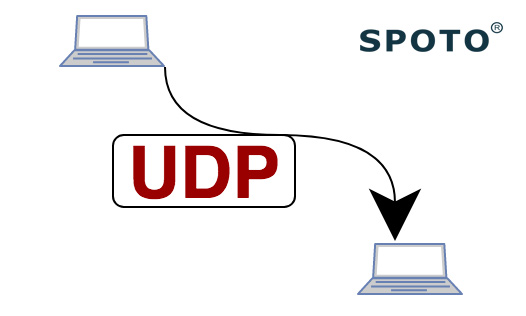Another important protocol in the TCP/IP site is the User Datagram Protocol (UDP). The protocol is basically a reduced version of TCP. Like TCP, this protocol provides data delivery between applications running on a host on a TCP/IP network, but unlike TCP, it does not sort the data or care about the order in which segments arrive at the destination. so it is considered unreliable protocol. UDP is also considered a connectionless protocol because there is no virtual circuit between the two endpoints before data transfer.
Because it does not provide many of the features provided by TCP, UDP uses much fewer network resources than TCP. UDP is typically used with two types of applications:
VoIP (IP Voice, an application that tolerates the loss of data, uses UDP, because if a voice packet is lost, there will be too many delays when the packet is retransmitted, and the voice will become difficult to understand.
Applications with certain application mechanisms to recover lost data– The network file system (NFS) uses application-layer code to perform recovery, so UDP is used as a transport layer protocol.
The UDP header is 8 bytes long and consists of the following fields:

Here is a description of each field:
· source port – The port number of the application on the host where the data is sent.
· destination port – The port number of the application on the host where the data is received.
· length – the length of the UDP header and data.
· checksum – checksum of both the UDP header and UDP data fields.
NOTE
UDP is the transport layer protocol (Layer 4 of the OSI model).
Finally, if you are preparing for the CCNA certification exam, and you can follow SPOTO. We will update some useful technical articles. SPOTO is committed to various certification exams dumps. we can guarantee you can pass exams for the first time. join us: http://bit.ly/ccnastudygruop

 Join Telegram Study Group ▷
Join Telegram Study Group ▷













